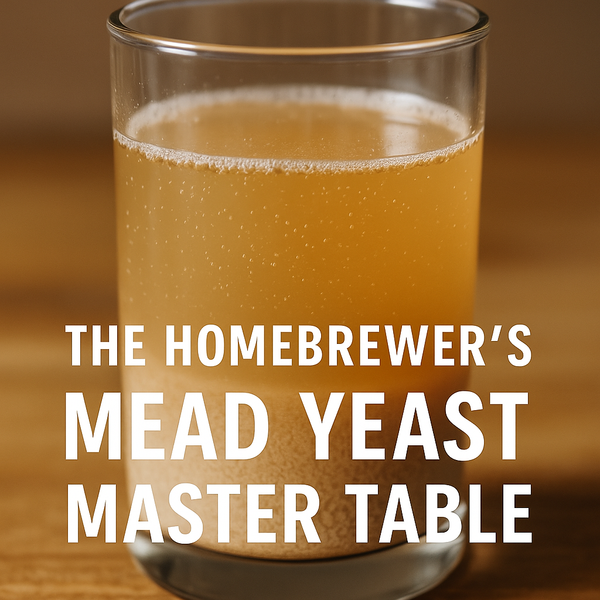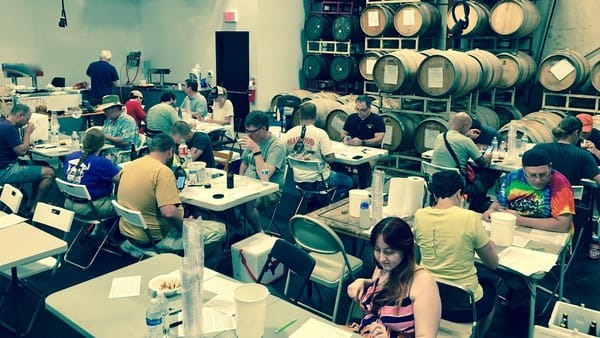Water Revisited, Part 1
There has been a flurry of interest in brewing water management for the homebrewer, largely coinciding with the release of the book "Water - A Comprehensive Guide for Brewers" by Palmer and Kaminsky. And as a book, targeted toward professional brewers enters the collective conscious of homebrewers, questions come up, especially when the math and science escapes into calculus and organic chemistry. It is a very interesting read, and sets straight some misconceptions about mash pH modeling and prediction, as well provides some practical application in the brew house. I have read the book, understand very little of the "why" and greatly appreciate the "how." My chemistry kung-fu is weak, but improving. Please do not mistake this for a "I read the book and therefore am expert" posting! Activity at Homebrewtalk.com's Brew Science forum is being flooded with questions about water chemistry.
For many of us, manipulating our water is a scary proposition, and a bit of weird science. We have collectively been trained to trust the water from our taps (despite some myths regarding fluoride and chlorine). For good reason! The water in the US has been well managed, and for the most part, provides us very safe and healthy drinking water! In fact, from a safety perspective - much safer statistically than bottled water. The fear (or misunderstanding) by the brewer is that by adding "chemicals" we are somehow adulterating what is otherwise pure water. But in most cases, tap water needs to be treated before it is useful as brewing liquor.
History tells us that many specific beers styles evolved as a result of the local water source, well predating municipal water treatments, so darker beer styles came from local waters with more bicarbonate (CaCO3) and lighter styles from less alkaline water sources. Softness is a specific characteristic of waters used to brew Pilseners and Helles styles in Bavaria. Then hardness comes into play, where it is well documented that in London, the Burton brewers added significant amounts of sulfates, magnesium and chloride to their liquors, attempting to replicate the original source (and thereby flavors) of their brewing water. Mitch Steele discusses the moving of wells away from biological contaminated waters, resulting in large variations in minerals - thus the artificial additions. The ability to manipulate water profiles introduced a new technology allowing brewing to be more consistent over time (batch to batch) as well as distance (location to location).
We can be assured that water management, and specifically altering that water to adapt it for brewing has a long history in commercial and personal brewing. We can further be assured that much of the common or collective knowledge, based in thousands of years of experience, is pretty reliable. What we are seeing in the science, is a new understanding of principles of why certain things happen, and better observation of what is practically happening in the brew house. There remain some myths to be revealed however.
An example: Chalk has been sold as a mineral to raise mash pH for many years. It does, but only if you can get it to dissolve. Chalk is Calcium Bicarbonate that naturally forms in nature under very specific conditions, but in the brew house is virtually non-soluble. It is nearly impossible to see the chalk when added into the mash, but is largely caught or precipitates in the mash itself and has little real effect in buffering mash pH. Chalk precipitates in the HLT when water is heated and cooled, a process that can be used to de-carbonate brewing liquor and reduce alkalinity in your liquor. Pickling Lime is another way to raise mash pH in the mash tun, and dissolves and acts very quickly.
We also know that malts, when hydrated, contribute acid to the mash. Dark roasty malts generally are more acidic than lighter malts, and some adjuncts may also bring either acidity or alkalinity into the mash. So this then dictates that each individual recipe requires different water profiles to achieve an efficient and correct mash pH, while leveraging the mineral additions for flavor in either the mash or sparge or boil to achieve our goals. This is where a spreadsheet like "Bru'n Water" shines, and helps to predict and manage the processes and procedures for additions appropriately. I would consider this for an advanced or experienced brewer doing All Grain or Partial Mash brewing, and now consider specific mineral additions requirements for my recipes with a basis of R/O liquor.
So to the question of what recommendation to make to a novice brewer requires a simplification of the process, and opening the discussion to experimentation and repeat ability. On HBT, there is a simple Water Chemistry Primer that I would recommend as a concise starting point. It recommends simple mineral additions to "soft" water with low alkalinity (Reverse Osmosis, Distilled, or Spring waters) based on the style of your beers. Brilliant. Simple.
Other Recommendations:
Tap Water: Some people have excellent municipal or well water as a basis for specific beer styles. Having your water tested by Ward Labs or other source will provide a basis for manipulating your brewing liquor to address virtually any recipe. That said, I always filter with an activated charcoal filter and use a Campden tablet to remove remaining chlorine and chloramines. My water is pretty aweful - so now I use 100% RO water.
Brew/Re-Brew: Using the same recipe, brew back to back with minor changes to the brewing liquor. Taste carefully batch to batch and take good notes - detect if you prefer more or less sulfate, chloride, sodium, magnesium as a flavor enhancer. The practice is also useful in brewing procedures in general. Document everything possible to allow you to reproduce the process and procedures. I have a house APA recipe that is my calibration brew, and where I experiment the most.
Adjust additions based on process: Old thinking of adjusting all of the brewing liquor at once may require additions that impact your flavor choices, as it will influence mash pH. Using only the additions necessary to achieve mash pH, and adding the rest into sparge water or the boil kettle is a great way to manage this issue. So if you use a traditional mash tun or BIAB, your additions will shift to achieve the best results.
Research and make additions based on knowledge and preference: It is not a safe practice to just blindly follow a profile, unless you have confidence in the source. Most of the water profiles provided over the last several decades are from before the brewery. Municipal water sources and treatments have changed, and most importantly, so have brewery water treatments. Understanding how these profiles (assuming some accuracy) influence the specific components that define a beer from that region will also guide personalized additions toward your preferences.
Homebrewing is a fun and imprecise science experiment with the benefit of a refreshing beverage at the end. Don't be afraid to experiment. The worst that can happen is to pitch a batch of beer, the best result is that you find the perfect combination of minerals for your recipe that pushes it from great to incredible!




